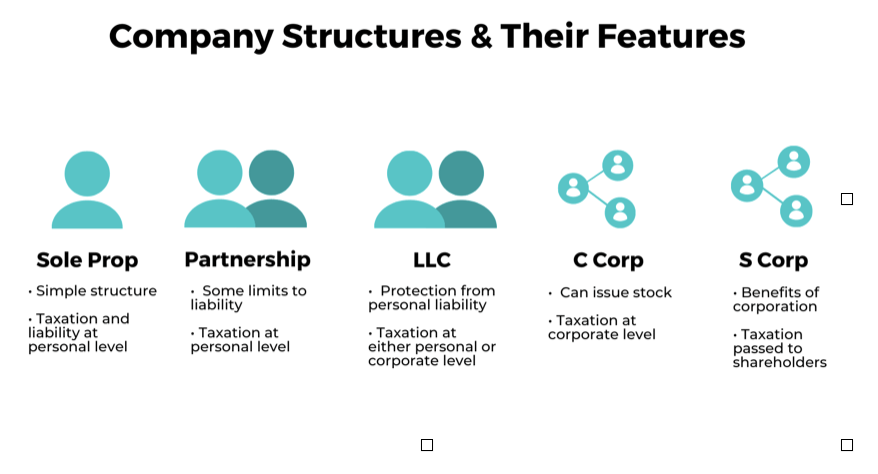Building and running a business requires many different skill sets. You’re often the development head, the chief strategist, the head of marketing, and you know every role from the ground up because you created them.
But stepping back from the day-to-day and looking at your business from the perspective of what you want to get out of it can be valuable. Whether it’s a sale down the road, a transition somewhat sooner, a family succession, or you just want to grow as fast as you can now, taking an outsider’s viewpoint can help.
How does your business stack up? What could be done differently? When you create a portfolio for traditional investments, you identify a benchmark to measure it against, so you know what’s working and what’s not.
A business is no different. We’ve identified a few areas that we focus on when we work with business owners to ensure they are optimizing their efforts. Let’s take a look at these in this week’s Inside Look at Building Towards Wealth.
Do You Have the Right Structure?
Business structure is usually about taxes and liability. While for many companies, a partnership structure works well, there are situations where incorporating can be beneficial.
The sole proprietorship structure’s simplicity is a major advantage, but it does have a significant shortcoming in that sole proprietorships do not create a separate business entity. This means that business assets and liabilities are not independent of your personal assets and liabilities.
A partnership is an unincorporated business owned by multiple owners, people, or other businesses. Profits are divided among its owners and reported on their tax returns. Unlike sole proprietors and partnerships, corporations are taxed on their profits. In some cases, corporate profits are taxed twice — first, when the company makes a profit, and then shareholders owe taxes when they receive dividends.
Corporations have a completely independent life separate from their shareholders. If a shareholder leaves the company or sells their shares, the C corp can continue business operations relatively undisturbed. Another advantage is that corporations can raise capital by selling stock, which can also help to attract top talent.
Corporations can be a good choice for medium- or higher-risk businesses, those that need to solicit funds from venture capital funds or through an IPO, and companies that plan to become public or be sold eventually.
An S corp is a corporation that elects to pass corporate income, losses, deductions, and credits through to its shareholders for federal tax purposes. This allows S corporations to avoid double taxation on the corporate income in contrast to the C corp.
Retirement Plans Can Build Wealth, Save on Taxes, and Attract Talent
No matter what size your business is, a retirement plan can work for you. While you probably see your business as your main source of income in retirement, there are many benefits to earmarking funds away from your company. The first is diversification – having a portion of your wealth invested in outside assets can lower the risk of your overall financial portfolio.
Company retirement plans can be structured to allow you to save on taxes as both an individual and a business owner, as some of the costs are tax-deductible. They are also an excellent way to attract and retain top talent. A recent study by Betterment found that 65% of respondents would leave their current job for one that offered a high-quality retirement plan.
There are options even if you’re not ready to offer an employer-sponsored 401(k) plan for all employees. From a solo 401(k) if you are the only employee (your spouse can contribute too if they work in the business) to a SEP or a SIMPLE IRA, plans can be crafted to match your business needs.
Addressing Continuity
Business continuity isn’t just about keeping systems online in the event of an external crisis. If something happens to you or your partners, you need to ensure that business will go forward. Your own estate planning is critical to protect your family, so you want to be sure you’re covered with the right level of personal insurance.
When it comes to the business, you need insurance on the right people, and you also need a buy-sell agreement so that transitioning is seamless. Valuation is usually the key element, whether it triggers a change in control or a sale.
Building Value for Now and Later
When we work with business owners, we first arrange to value the business as it is. Then we go through an exercise to discover what the business owner needs to get out of the company on retirement or other transition. Our work then focuses on getting those two numbers to converge.
It’s helpful to create a framework and then think through what the goal is for each area and then identify strategies and tactics that can get there. Some of these involve hiring additional talent, deciding between purchasing or leasing premises and equipment, or outsourcing roles or functions.
• Improve cash flow – lease instead of buy, reduce expenditures
• Increase profitability – improve margins from both cost and revenue
• Lower your risk – diversify revenue streams and create recurring revenue streams
• Streamline operations – inventory management, payroll control, etc.
• Attract and retain high-quality talent – qualified retirement plans, cash balance plans, stock plans
• Build or refresh your sales/marketing process
• Get your books in perfect shape
The Bottom Line
Taking a step back from the daily grind and getting perspective on where you are adding value or coming up short can be an excellent way to ensure you are tracking your goals. Working with an outside “sounding board” that has experience with business financial planning and also has your personal wealth goals in mind can bring things together and help you create a plan.
Please feel free to reach out with any questions you may have. Connect here



